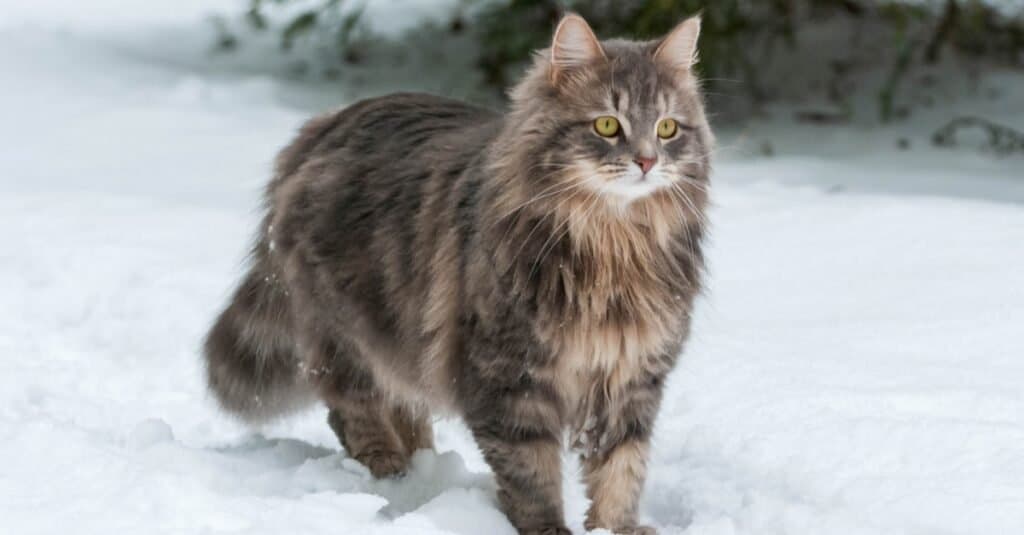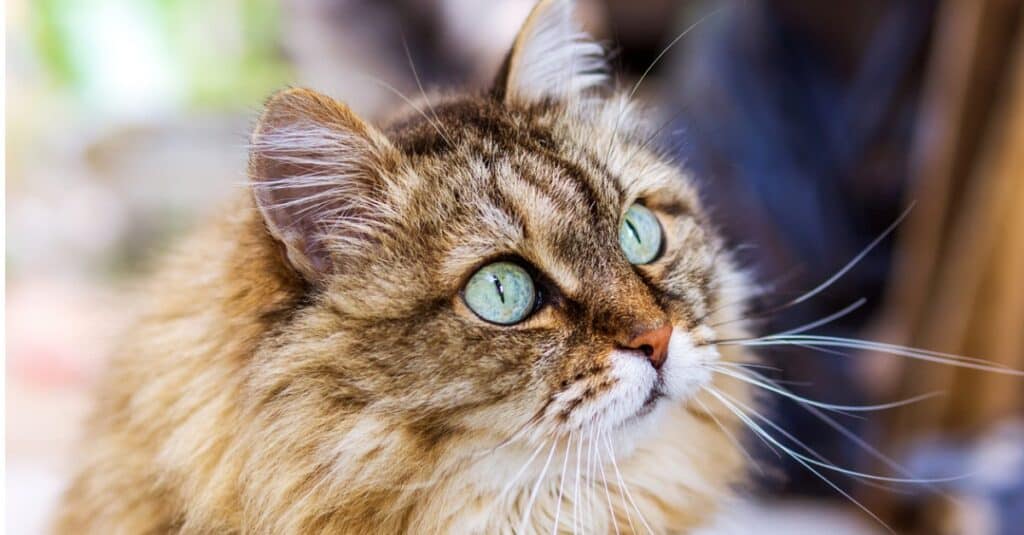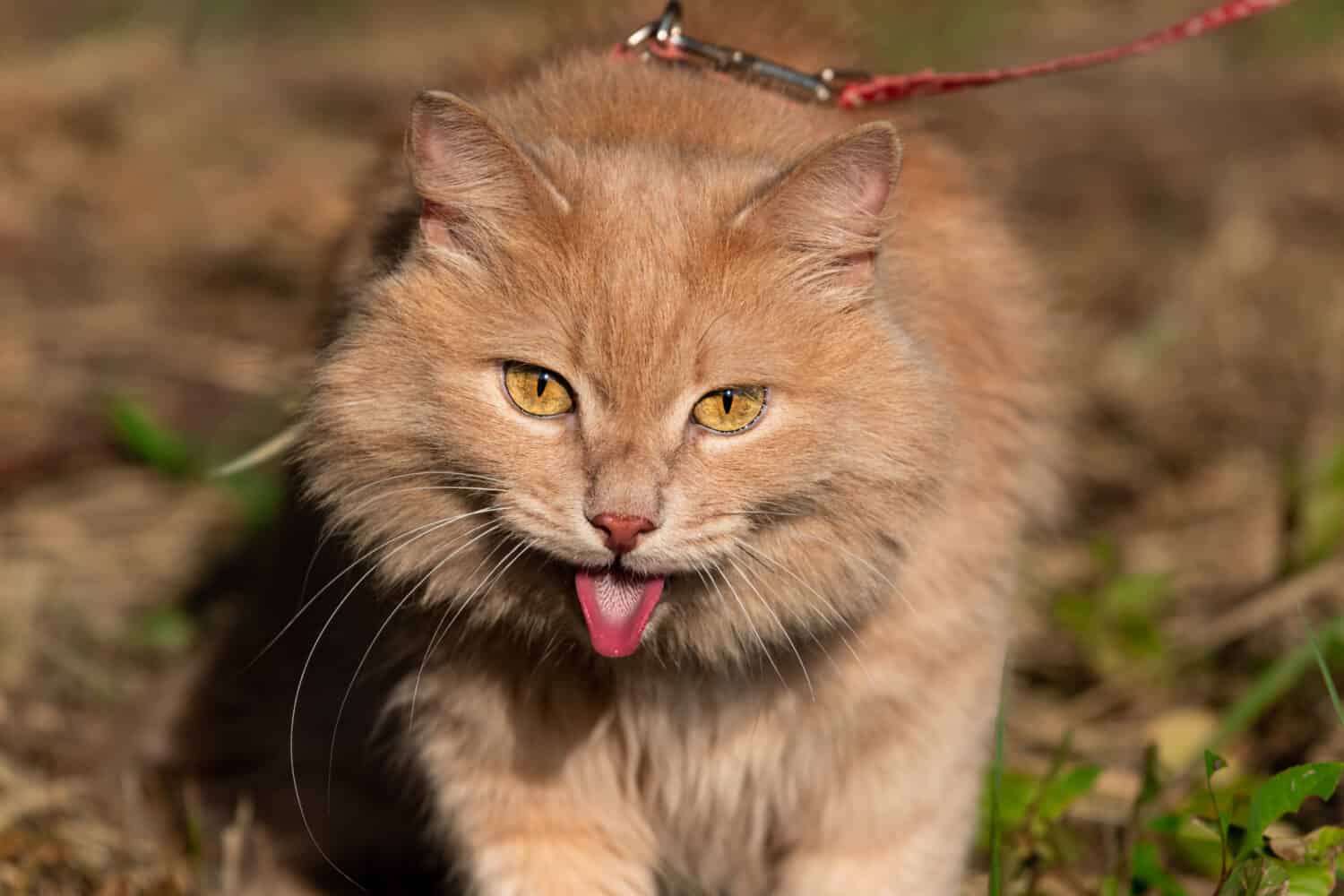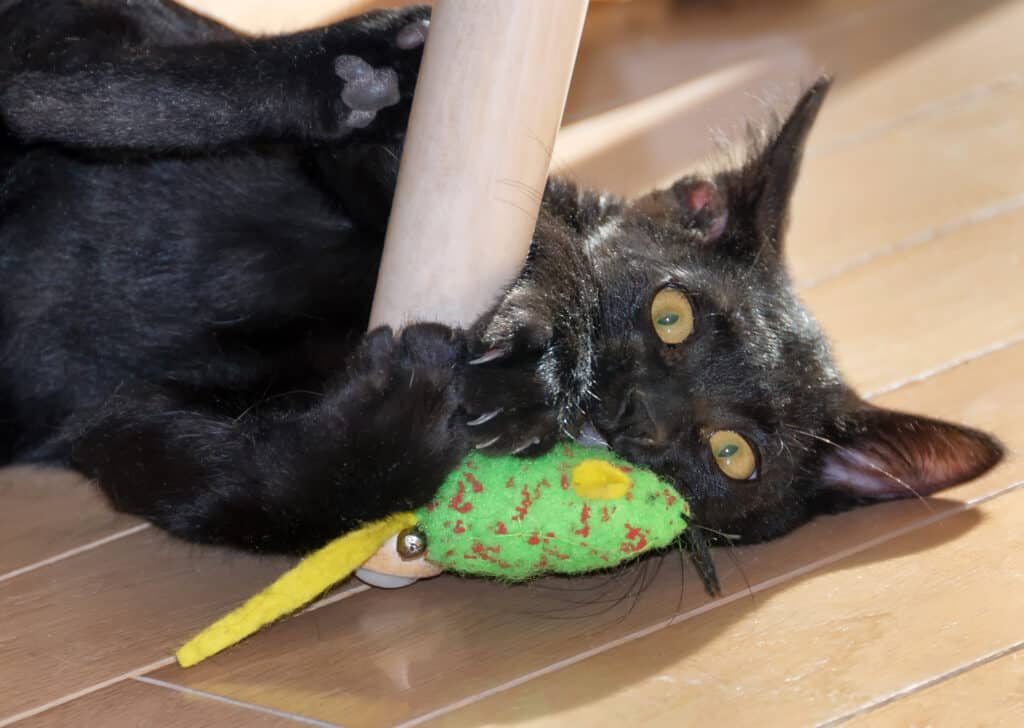If you’re looking to purchase a Siberian cat, you may be wondering which colors are rare and which are more common. Since Siberian kittens already go for a high price, you can be sure that rare colors can be more expensive than other colors. But regardless of price, you may just be looking for a particular color of cat. We’re going to give you a list of Siberian cat colors, from rarest to most common.
A Siberian kitten ranges in cost from around $1,200 to $2,000 but can cost up to $4,000. You can find older cats at animal shelters and adoption agencies for a bit cheaper. Older cats are less expensive than kittens, and you can usually find them for under $1,000.
The Cat Fancier’s Association recognizes many different colors of Siberian cats. You can view a comprehensive list of the colors here. The most common coloring of Siberian cats is those with tabby markings, particularly mackerel tabbies. There are many other colors including single-colored Siberians, like white, black, and red cats. Siberians also come in bi-color patterns, including tabbies, tortoiseshell, and many mixes in between.

Siberian cats come in many different coat colors, including solid colors and color mixtures like tabbies and tortoiseshells.
©Emil Helge/Shutterstock.com
What Makes Siberian Cats Unique?
By the name, you may gather that the Siberian cat comes from Siberia, which is a part of Russia. Siberia is not a very comfortable place to live outside, as the winters are freezing cold with lots of heavy snow. This is why Siberian cats have the long, thick coats that they are prized for.
There is no exact time or origin story that tells when Siberian cats were domesticated. In fact, the species is known for having a bit of mystery to them. They are largely detailed in Russian stories and fairytales, often describing the cats as protectors. Stories are told of their ability to guard livestock, homes, and sleeping humans.

Siberian cats are the star of many stories and fairy tales in Russia. They have been domesticated for over 1,000 years, though the details of their domestication are largely unknown.
©barmalini/Shutterstock.com
Expanding From Russia
In the 1990s, the Siberian cat species made its way to the United States after a cattery owner, Elizabeth Terrell, imported them. She noticed that many Russian cat owners were interested in bringing the breed overseas, so she made a trade for three Siberian cats. After this, the market for Siberian cat breeding in the U.S. expanded exponentially.
In the United States, Siberians are often prized for their fancy coat and used as show cats. They come in many different colors. The most common color combination for Siberian cats is the tabby color, varying in shades of brown, black, gray, orange, and white. A majority of Siberian cats have these colors, but there are many other colors that the cats can come in.

The most common color combination for a Siberian cat’s coat is tabby. The tabby coat variety can be identified by the “M” on the cat’s forehead.
©iStock.com/Алексей Филатов
Solid Color Siberians
The most rare types of Siberian cats are those that come in just one color. Most Siberians are a mixture of two or more colors, but some are just one color. Within the solid color Siberians, some colors are more rare to see than others.
Solid-colored Siberians are also called “selfs”. If they are solid in color, they will not have any variations of color or any markings on their coat. Their noses and the pads of their paws will also be that solid color.
White Siberians
A white Siberian is a unique cat because they are completely white in color. While the most common color of Siberian cats is cats that are all white with black or gray markings, white Siberians are completely white in color. They are the rarest type of Siberian cat you can find because their coloring is the result of a genetic mutation. The mutation causes the pigment cells in their fur to die, which makes them appear completely white.
A white Siberian is the rarest type you can find, and they are highly sought after by collectors and breed enthusiasts.

White Siberian cats are the result of a genetic mutation that leaves their fur void of any other colors.
©dien/Shutterstock.com
Black Siberians
The Cat Fancier’s Association describes these Siberians as “dense coal black”. They are expected to have black fur from the tip of their tails to the tops of their noses, and their paws are also black. They are a very dark black color, which is a rare color to see on cats with such long fur like the Siberians.

Black Siberian cats maintain their dark hue throughout their entire coats.
©Anna Krivitskaya/Shutterstock.com
Blue Siberians
Siberian cats that are fully blue are rare to see, but they should have the blue color on their entire bodies. The tone should be level, not getting darker or lighter in any area.

Blue Siberian cats have a blueish-gray color to their coats. They are that same color throughout their entire bodies.
©Heidi Bollich/Shutterstock.com
Red Siberians
Red Siberian cats should have no markings in their fur, as is typical for red tabbies. They come in brilliant red colors, and that color should appear the same in every part of their coats. Their paw pads and noses should appear a brick red color.

Red Siberian cats don’t have the typical tabby markings.
©K64End/Shutterstock.com
Cream Siberians
The last color of solid color Siberians, which is a bit more common is cream. The lightest cream colors are most desired by the Cat Fancier’s Association, but the cats can come in all shades of cream. It’s important that cream Siberians maintain the same solid color as the root of their fur.

Lighter colors of cream are desirable for Siberians, according to the Cat Fancier’s Association.
©DragoNika/Shutterstock.com
Bicolor Siberians
Bicolor Siberian cats are cats that have two colors in their fur. They are always born with both colors, and their fur may change a bit as they age, but they will always have at least two colors. There are many color combinations when it comes to bicolor Siberians, but the most common is black and white. There are also gray and white Siberians, brown and white, blue and white, and silver and white. As you can tell, the base for any bicolor Siberian cat is white.
The bicolor variety of Siberian cats is one of the most common, as black and white Siberians are the ones you’ll see most often. They can be identified by the inverted “V” on their faces.

Black and white, or gray and white Siberians are some of the most common colorations for this species.
©barmalini/Shutterstock.com
Smoke Siberians
Smoke Siberians are a variety of Siberian cats that are known for having a smoky color, their fur appearing to be a shaded white color. These cats have white on their underbelly but appear to be a different color on top. Their fur appears dark in some places and light, or “smoky”, in others. Smoke-colored Siberians can come in black, blue, cream, tortoiseshell, and blue-cream varieties.

This bicolor Siberian has a smoky fur color, which is most noticeable on its back, where the fur appears gray or smoky.
©Nynke van Holten/Shutterstock.com
Tortoiseshell Siberians
Tortoiseshell markings on a cat can be rare to find on certain species, but tortoiseshell Siberians are a fairly common type to find. They have patches of red on a coat that is brown, blue, or silver. They often have faces that are half black and half orange. Tortoiseshell Siberians have unique personalities, often giving off an aura of mystery.

Tortoiseshell Siberian cats have specks of orange, white, and brown on a black fur base. Sometimes their faces appear to be half orange and half black.
©Heidi Bollich/Shutterstock.com
Tabby Siberians
Tabby Siberians are fairly common to see, and they come in many different shades. The classic tabby color is most common, with a tell-tale “M” across their foreheads. They have dense, clearly defined markings across their entire bodies that can come in many colors. There are also patched tabbies, which are more rare than classic tabbies.
Patched tabbies have the typical tabby pattern along with patches of red or cream throughout their bodies. Spotted tabbies are also rarer than classic tabbies, and they appear to have spots all over their bodies. To be considered spotted, the spots should not touch and the cats should have “vest buttons” on the undersides of their bodies.
Ticked tabbies have hairs that are ticked with different shades of colors. The top of the hairs is a different color than the base.
Tabbies, including patched, spotted, and ticked tabbies come in many different colors and shades including brown, blue, silver/gray, white, golden, and many in between.

Siberian cats with tabby markings are fairly common. They can be identified by the “M” on their foreheads.
©Massimo Cattaneo/Shutterstock.com
Adopting a Siberian Cat
Adopting a new cat means getting toys, and food, and having a space ready for your new friend. Some things to consider before adopting a Siberian cat are the space you have, the cost to purchase a kitten or cat, and what other animals will be in the home. We’ve compiled a list of the best cat foods so you don’t have to look too far!
Siberians are known to have vibrant personalities. They are usually very friendly to family and strangers, so they are a good cat for those who have company over regularly. Siberians form very deep attachments to their owners and are often compared to dogs because of this.
Siberian cats have very long, thick coats. If you adopt a Siberian cat, you will have to keep up with their coat and make sure they are able to keep it maintained. Generally, cats will clean their coats and you won’t need to bathe or brush them too often. Most veterinarians recommend brushing Siberian cats around once per week. However, if your cat develops an illness or gains too much weight, it may have trouble cleaning its own coat. In this case, you will need to brush and maintain the cat’s coat more often.

It’s important to provide toys when you adopt a Siberian. This species enjoys play and toys like mice that they are able to prey on and chase!
©Lux Blue/Shutterstock.com
Summary of Siberian Cat Colors
| Main Type | Color Varitiations |
|---|---|
| Solid Color | White, black, blue, red, and cream |
| Bi-Color | Black and white, gray and white, brown and white, blue and white, and silver and white |
| Smoke Color | Black, blue, cream, tortoiseshell, and blue-cream varieties |
| Tortoiseshell | Patches of red on a coat that is brown, blue, or silver |
| Tabby (Plain, Ticked, Patched, and Spotted) | Brown, blue, silver/gray, white, golden, and many in between |
The photo featured at the top of this post is © Sergio Photone/Shutterstock.com
Thank you for reading! Have some feedback for us? Contact the AZ Animals editorial team.







